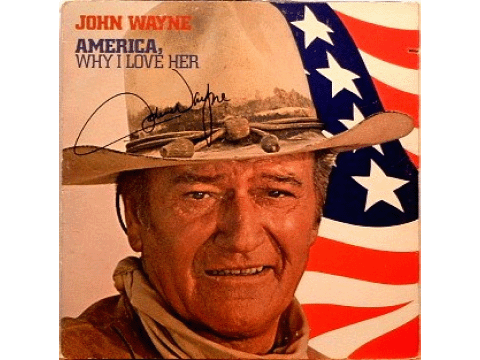About
John Wayne’s Career
Welcome to the official website of The Duke, an Academy Award winning American actor who became a popular icon through his film roles made during Hollywood’s Golden Age.
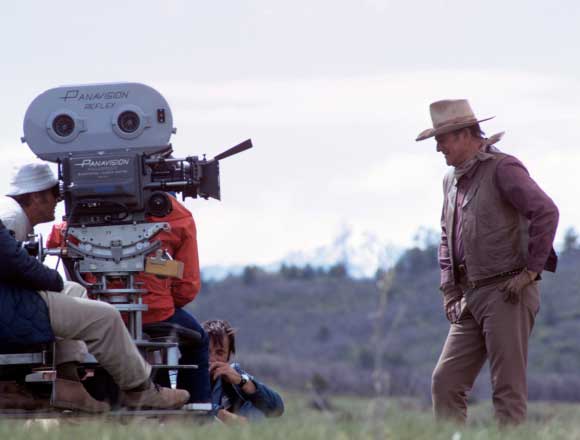

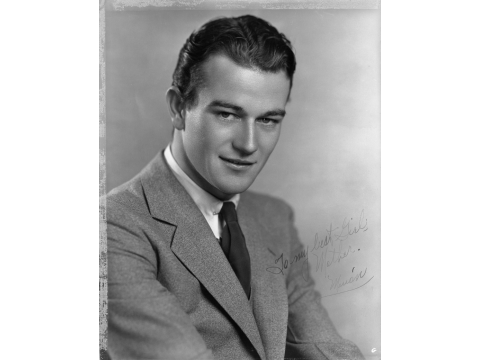
1928
Duke’s Hollywood Entry
In the late 1920s, while Duke was employed as a prop man and as an extra in pictures, he was first introduced to those individuals who would become his closest colleagues, including John Ford. Morrison’s first job for John Ford was on the set of “Mother Machree” (1928), herding geese.
Introducing
John Wayne in
“The Big Trail”
With a few years of property and extra work under his belt, young Duke caught the eye of director Raoul Walsh. Walsh, who by the late 1920s was already an accomplished actor, writer, producer, and director, saw something in the tall young actor and cast him in his first starring role as Breck Coleman. The film was “The Big Trail” (1930). It was on this set that Marion Morrison acquired the name John Wayne, which he would use for the remainder of his personal and professional life.
1930
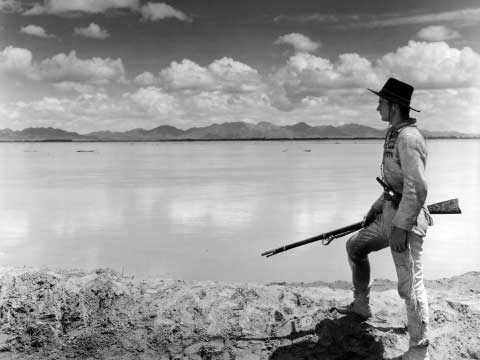
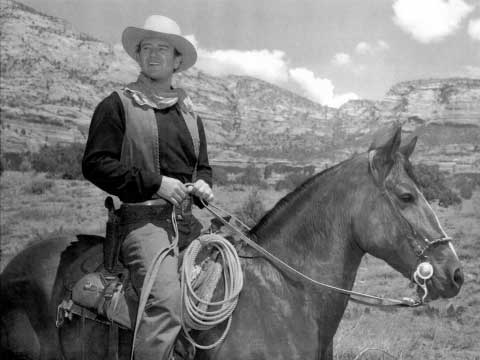
1933-1938
Duke Hones His Craft
Though his first starring role did not instantly catapult Wayne to stardom, it did give him the opportunity to hone his craft and acting style by working on a stunning number of films – more than 70 – throughout the decade. [From playing a bank employee to Barbara Stanwyck’s Lily in the 2005 National Film Registry’s “Baby Face” (1933), to boxing his friend Ward Bond in “Conflict” (1936),] His star continued to rise as films of this time period brought him to the attention of the movie-going public, especially across the heartland of America.
The Ringo Kid in “Stagecoach”
The end of the decade brought the opportunity to work with John Ford again, this time as a star in “Stagecoach” (1939), the first John Ford movie filmed in Monument Valley. After working at a breakneck pace in film for more than ten years, Wayne’s on-screen style and unique delivery were established. Probably one of the greatest entrance scenes in the movies, Wayne steals the movie with his physical presence in the role as the rifle-toting Ringo Kid.
1939
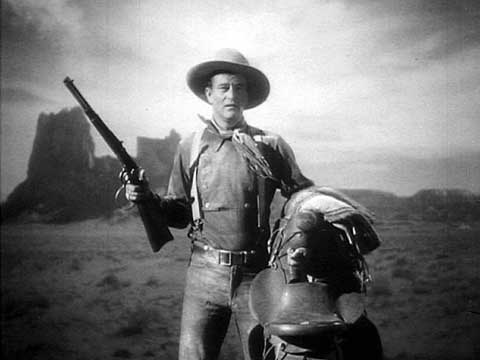
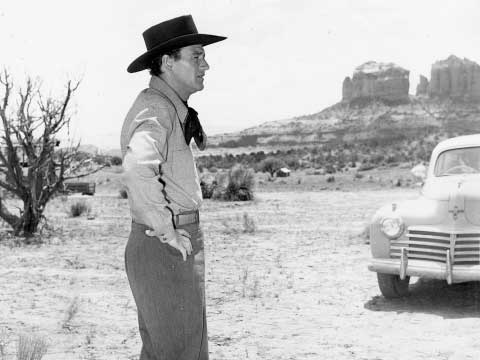
1947
Wayne as Producer
“Angel and the Badman” (1947) found Wayne in the role of both actor and first-time producer. As bad boy Quirt Evans, Wayne stars along with Gail Russell and regular costar Harry Carey and Bruce Cabot. It was the first of many films in which Wayne would work on both sides of the camera under the banner of his own production company.
Talented Co-Stars
Whether portraying on-screen a Captain, Colonel, Sergeant or Lieutenant, some of Wayne’s most memorable and original performances were during the 1940’s. Wayne continued to work with diverse and talented co-stars, including Henry Fonda, Shirley Temple, Anthony Quinn, Donna Reed, Harry Carey and his son, Harry Carey Jr., Ben Johnson, Victor McLaglen, and Montgomery Clift. As Captain Ralls in the 1948 film “Wake of the Red Witch” Wayne appears on screen again with co-star Gail Russell, an another Duke – surfing legend Duke Kahanamoku.
1948
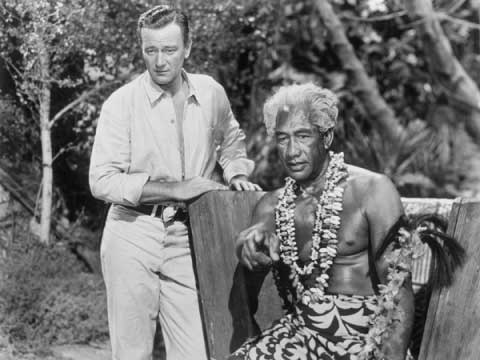
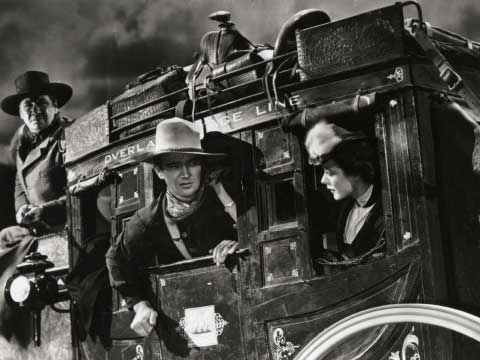
1950
Star of the Decade
Beginning in the 1950’s, Wayne firmly held a position in the top ten box office poll,where he would remain for more than 20 years. He continued to work at anextraordinary pace, often completing five to seven films in a single year.
I Love Lucy
Part of the golden age of television, the 1950’s brought significant entertainment programming directly to American’s in their homes, including the “I Love Lucy” with Lucille Ball and Desi Arnaz and later, “The Lucy Show.” John Wayne made several appearances on the Emmy award-winning series, often playing himself as a victim o humorous plot lines.
1951
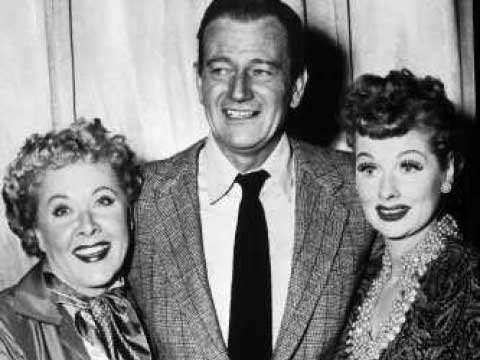
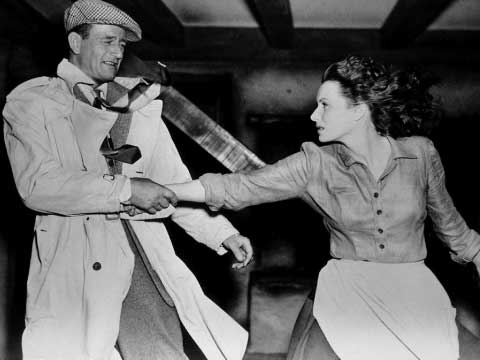
1952
Wayne and Maureen O’Hara
In the early 1950’s, Wayne and co-star Maureen O’Hara made their first on screen appearance together in the final installment of John Ford’s cavalry trio, “Rio Grande” 8 (1950). The stars would appear onscreen together several times over the next twenty years. Whether as Kirby and Kathleen Yorke (“Rio Grande,” 1950); Sean Thornton and Mary Kate Danaher (“The Quiet Man,” 1952); Spig and Min Wead (“Wings of Eagles,” 1957); George Washington and Katherine Gilhooley McLintock (“McLintock!” 1963); or Jacob and Martha McCandles (“Big Jake,” 1971) – the pair always delighted motion picture audiences with their memorable and witty theatrical performances.
The Searchers
John Ford and John Wayne are one of the great actor/director collaborations in history. The pair began working together as early as the 1920’s, and they again joined in 1956 to film The Searchers. The Searchers is widely considered an American masterpiece of filmmaking, and the most-revered film of director John Ford. With spectacular VistaVision cinematography in Ford’s beloved locale, Monument Valley, the film captures both the beauty and the danger of isolation in the western frontier.
1956
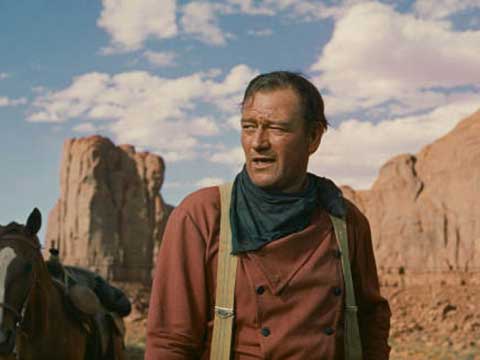
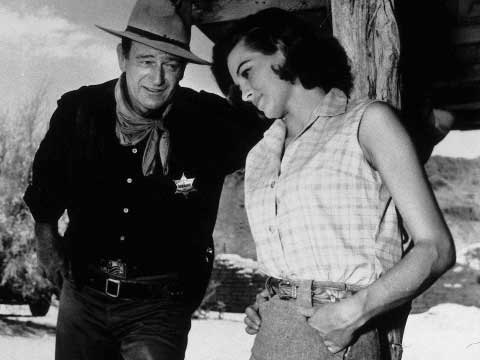
1959
Rio Bravo
The all-star cast in “Rio Bravo” (1959) paired Wayne with new co-stars, including 19-year old Ricky Nelson and newcomer Angie Dickinson. Even very early in his career, Wayne was able to work with a talented and diverse group of co-stars, many of whom went on to enjoy prominent careers in motion pictures, such as Academy Award winners Walter Brennan, Loretta Young, Gary Cooper, Sophia Loren, and Jimmy Stewart.
It’s All in the Family
Under the banner of Wayne Fellows Productions, and later his own production company named after the ship in “Wake of the Red Witch,” Wayne produced a number of memorable and award winning motion pictures throughout the 1950’s, 1960’s and 1970’s. In 1960, Wayne produced, directed and starred in “The Alamo,” which went on to receive seven Academy Award nominations, including for best picture, at the 33rd annual Academy Awards.
In addition to working with his longtime colleagues and co-stars on these productions, Wayne maintained a family environment on set throughout his career. With seven children, he immensely enjoyed the company of his family on set as visitors, actors and as members of the production team. Throughout the last two decades of his career, Wayne’s children appeared in films such as “Rio Grande,” “The Quiet Man,” ‘The Conqueror,” ‘The Searchers,” “The Alamo,” “Donovan’s Reef,” “McLintock,” and “Big Jake.” The picture shown is John Wayne on the Rio Grande set with his son Patrick.
1960
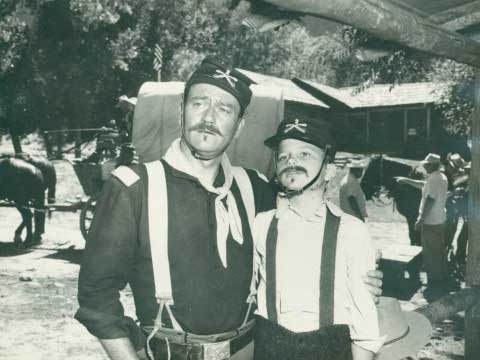
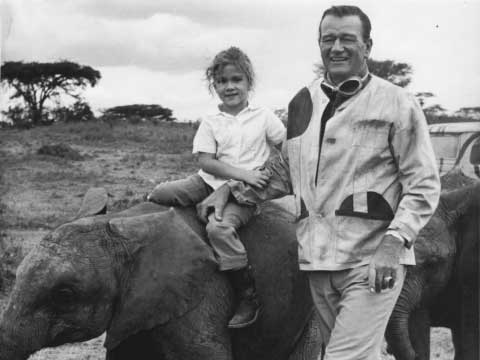
1962
Wayne in Africa
Filmed in the Arusha National Park in Tanzania, director Howard Hawks’ “Hatari!” (1962) remains a stunning historical record of the region as Wayne and his co-stars bring the beauty and adventure of east Africa to the silver screen. The film proved to be significant for the region, bringing never-before-seen images and sparking interest in the region as a tourist destination. Nominated for an Academy Award for best cinematography, the film also became popular for Henry Mancini’s composition, “Baby Elephant Walk.” The picture shown is of John Wayne with his daughter Aissa sitting on a baby elephant during the filming of Hatari!
True Grit
As the cantankerous one-eyed Marshall Rooster Cogburn, Wayne and his co-stars provided award winning performances in Henry Hathaway’s western adventure, “True Grit” (1969). Wayne’s performance garnered him a second Time Magazine cover (August 8, 1969) along with numerous awards and nominations: best actor at the 42nd annual Academy Awards; a Golden Laurel Award for best action performance; a Bronze Wrangler for best theatrical motion picture; and a Golden Globe for best performance by an actor in a motion picture drama.
1969
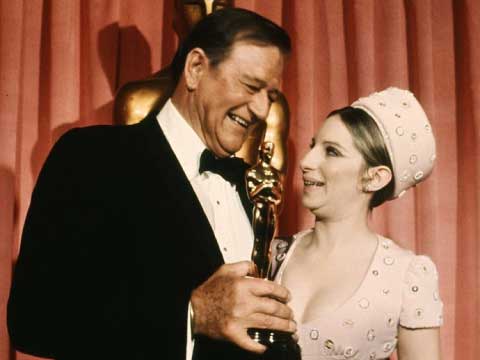
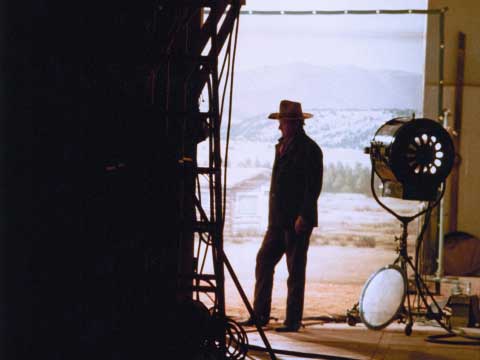
1970s
Duke’s Final Movie
True to his word about never retiring, at 65 years old Wayne continued to work in motion pictures, starring in nearly a dozen films in the last decade of his life including such memorable titles as “The Cowboys” (1972) and “Rooster Cogburn” (1975). In his final film “The Shootist” (1976), Wayne reunited one last time with a few of his former costars including Jimmy Stewart, with whom he starred 14 years earlier in “The Man Shot Liberty Valance;” Lauren Bacall (“Blood Alley,” 1955); and Richard Boone (“The Alamo” (1960), “Big Jake,” 1971).
America, Why I Love Her
Back in the 1930’s his diverse roles found Wayne cast as a singing cowboy SandySaunders in the 1933 film, “Riders of Destiny.” Stories indicate that Wayne asked the producers to find a cowboy who could actually sing – a new star and singing cowboy named Gene Autry took his place. In spite of this, Wayne would later garner a Grammy nomination for his spoken word album “America, Why I Love Her.”
1973
